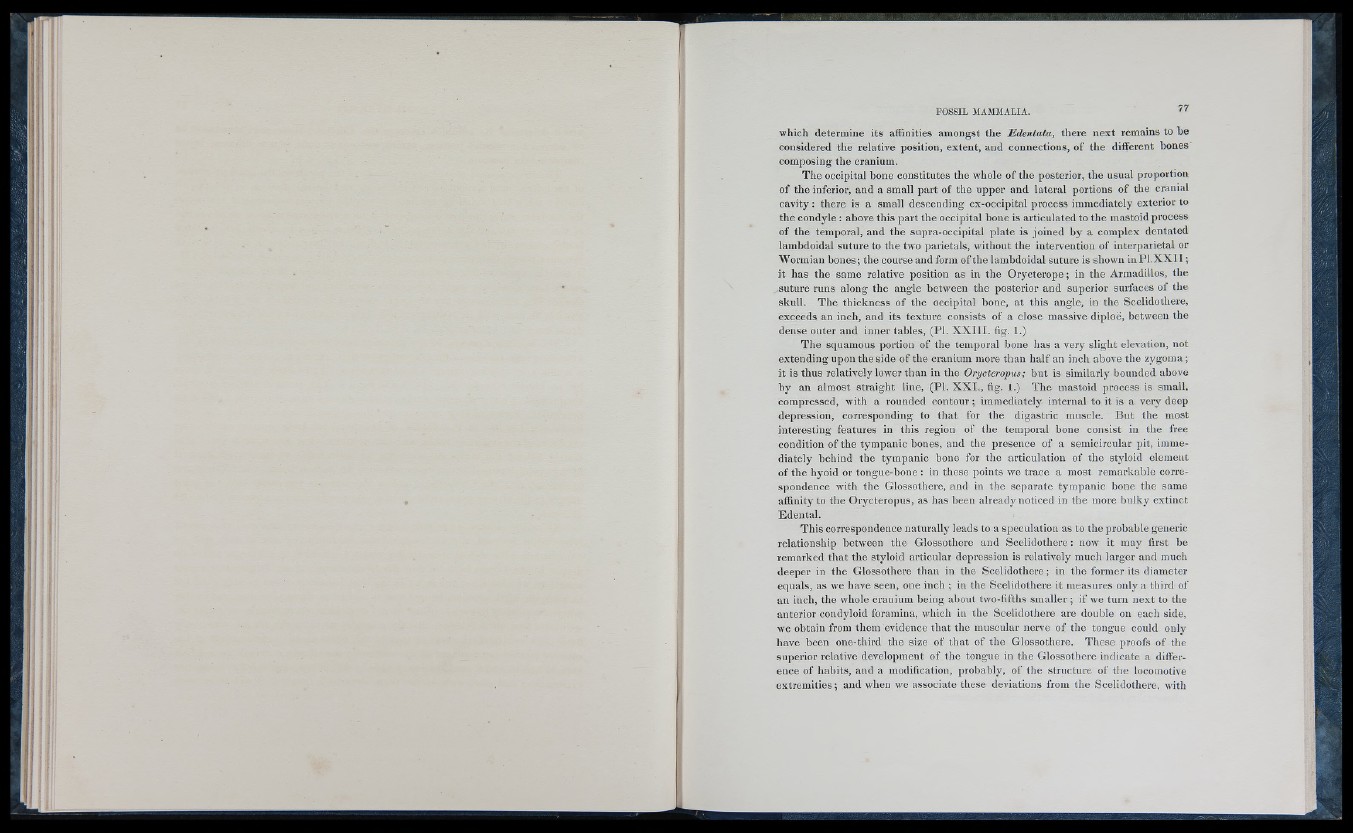
which determine its affinities amongst the Edentata, there n ex t remains to be
considered the relative position, extent, and connections, o f the different bones'
composing the cranium.
The occipital bone constitutes the whole o f the posterior, the usual proportion
o f the inferior, and a small part o f the upper and lateral portions o f the cranial
c a v ity : there is a small descending ex-occipital process immediately exterior to
the c o n d y le : above this part the occipital bone is articulated to the mastoid process
o f the temporal, and the supra-occipital plate is joined b y a complex dentated
lambdoidal suture to the two parietals, without the intervention o f interparietal or
Wormian bones; the course and form o f the lambdoidal suture is shown in P l .X X I I ;
it has the same relative position as in the Ory cterope; in the Armadillos, the
suture runs along the angle between the posterior and superior surfaces o f the
skull. The thickness o f the occipital bone, at this angle, in the Scelidothere,
exceeds an inch, and its texture consists o f a c lo se massive diploe, between the
dense outer and inner tables, (PI. X X I I I . fig. 1 .)
Tlie squamous portion o f the temporal bone has a very sligh t elevation, not
extending upon the side o f the cranium more than h a lf an inch above the zy g om a ;
it is thus relatively lower than in the Orycteropus; but is similarly bounded above
by an almost straight line, (PI. X X L , fig. 1 .) T h e mastoid process is small,
compressed, with a rounded con tou r; immediately internal to it is a very deep
depression, corresponding to that for the digastric muscle. B u t the most
interesting features in this region o f the temporal bone consist in the free
condition o f the tympanic bones, and the presence of a semicircular pit, immediately
behind the tympanic bone for the articulation o f the styloid element
o f the hyoid or tongiie-bone : in these points we trace a most remarkable correspondence
with the Glossothere, and in the separate tympanic bone the same
affinity to the Orycteropus, as has been already noticed in the more bulky extinct
Edental.
This correspondence naturally leads to a speculation as to the probable generic
relationship between the Glossothere and S c e lid o th e r e : now it may first be
remarked that the styloid articular depression is relatively much larger and much
deeper in the Glossothere than in the Scelidothere; in the former its diameter
equals, as we have seen, one inch ; in the Scelidothere it measures only a third o f
an inch, the whole cranium being about two-fifths sm a lle r ; if we turn next to the
anterior condyloid foramina, which in the Scelidothere are double on each side,
we obtain from them evidence that the muscular nerve o f the tongue could only
have been one-third the size o f that o f the Glossothere. Th ese proofs o f the
superior relative development of the tongue in the Glossothere indicate a difference
o f habits, and a modification, probably, o f the structure o f the locomotive
e x tr em itie s; and when we associate these deviations from the Scelidothere, with